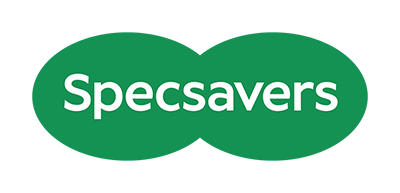Not so fast, myopia: Specsavers emphasizes the importance of early detection through regular eye exams as nearsightedness rates in children continue to grow
TORONTO, Aug. 21, 2025 /CNW/ - Myopia (also known as nearsightedness) rates in Canadian children have steadily increased in recent years – progressing faster than in previous generations1; however, according to a recent Specsavers Canada survey, conducted by Angus Reid Group, 82% of Canadians are unaware of this increase2.
"We're seeing a significant rise in the number of children being diagnosed with nearsightedness, more than ever before," says Naomi Barber, Clinical Services Director at Specsavers Canada. "While lifestyle changes such as spending more time outdoors and limiting screen use can help slow the progression of myopia, there is more that can be done to slow the progression and optometrists are at the frontline of this intervention. Specsavers is committed to raising awareness among parents about the importance of early detection. Making annual eye exams part of the back-to-school routine is a key step in helping to manage and control myopia in children."
The Canadian Association of Optometry recommends that school-aged children receive a comprehensive eye exam every year until the age of 19. Yet, the recent national Specsavers survey revealed 45% of school-aged children in Canada are not receiving annual eye exams as recommended2. This gap in routine eyecare is concerning, especially as rates of childhood myopia continue to rise.
As part of its mission to change lives through better sight, Specsavers is encouraging parents to include a comprehensive eye exam as part of their back-to-school routine. For children diagnosed with myopia, there are specific types of glasses and contact lenses that can help slow the progression of the condition. Specsavers offers several of these solutions, with savings available during the back-to-school season. Visiting an Optometrist from a young age is important. Early intervention can help reduce children's risk of developing long-term sight-threatening conditions.
Specsavers locations offer comprehensive eye exams by independent optometrists, including optical coherence tomography (OCT), a 3D advanced eye health scan that examines the back of the eye. The scan helps to assess eye health in detail and detect other causes that may be contributing to visual impairment. Children are covered for annual eye exams if they are under a provincial health care plan in most provinces.
"So much of parenthood is about preparing our little ones for a bright future," adds Barber, "Whether they have their sights set on being explorers, athletes, artists, scientists or musicians, we want to make sure they're ready to do so with confidence and clear vision."
Parents interested in learning more about myopia management or scheduling an eye exam for their child can visit specsavers.ca/myopia.
About Specsavers
Specsavers is an optometrist-owned business that entered the Canadian market in late 2021. Since then, over 158 locations have opened across the country, in B.C., Alberta, Ontario, and Manitoba. As part of Specsavers' commitment to accessible eyecare, Specsavers equips every location with optical coherence tomography (OCT) technology, which helps optometrists to detect sight-threatening conditions, such as age-related macular degeneration, glaucoma and diabetic eye disease, in their earliest stages.
Founded in the UK 40 years ago by optometrist husband-and-wife team, Doug and Mary Perkins, there are now more than 2,700 Specsavers healthcare businesses globally, serving over 44 million patients and customers. Specsavers is driven by its purpose of "changing lives through better sight" and aims to transform the way Canadians experience eyecare by offering exceptional service, advanced clinical equipment and affordable and quality eyewear.
1 |
Holden, B. A., Fricke, T. R., Wilson, D. A., Jong, M., Naidoo, K. S., Sankaridurg, P., Wong, T. Y., Naduvilath, T. J., & Resnikoff, S. (2016). Global prevalence of myopia and high myopia and temporal trends from 2000 through 2050. Ophthalmology, 123(5), 1036-1042. https://doi.org/10.1016/j.ophtha.2016.01.006 |
2 |
These are the findings of an online survey conducted from February 14– 19, 2025, among a randomized sample of 2,022 Canadian adults who are members of Angus Reid Forum. The sample was balanced and weighted to be representative of adults nationwide according to region, gender, age, and education, based on the Canadian census. For comparison purposes only, a probability sample of this size would carry a margin of error of +/- 2.2 percentage points, 19 times out of 20. Discrepancies in or between totals are due to rounding. |
SOURCE Specsavers Canada

Media Contact: Aideen Butler, [email protected]; Allison Chin, [email protected]

Share this article